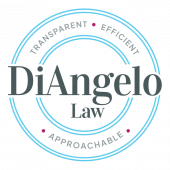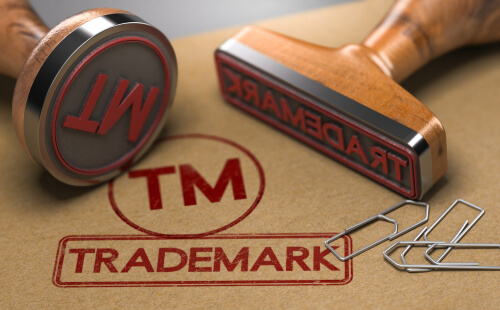When you are establishing trademarks (think names and logos) for your business or brand, be sure to apply for Trademark Registration with the United States Patent and Trademark Office (USPTO) so you can obtain federal protections and receive exclusive, nationwide rights to ownership on your mark. While registration isn’t necessarily required, it’s highly recommended, and can save you lots of money and headache in the long run. Most Trademark owners don’t realize there are two registers: the Principal Register and Supplemental Register. Both offer advantages and disadvantages but require different qualification criteria.
Why File on the Principal Register?
Let’s face it: as a trademark owner, your main goal is to register your mark on the Principal Register because it offers you the most legal and federal protection. The primary trademark register — aka the Principal Register — is maintained by the USPTO.
Owners aim to Register their trademarks on the Principal Register due to the advantages it provides. Trademarks on the Principal Register, for example, have nationwide priority over other marks so owners have the right to sue anyone in the United States who infringes on their trademark. Upon a successful registration, marks on the Principal Register affords owners with a legal validity of the trademark; hence, they now exclusively own the rights to their mark. In the case of a lawsuit, then, those registered on the Principal Register have a huge advantage because they won’t need further proof of validity or ownership in court. Ultimately, they have the upper-hand against the defendant (usually an infringer).
After five years on the Principal Register, trademarks have the ability to obtain “incontestable” status if owners properly file a Section 15. The Section 15 registration provides trademark owners with higher credibility in court, deterring potential lawsuits from competitors.
Does my mark qualify for the Principal Register?
Qualifications for registering on the Principal Register comes down to the mark’s level of distinctiveness. To clarify, only distinctive trademarks will be eligible for the Principal Register. How do you know if your trademark is distinctive?
Distinct marks fit into one of three categories: fanciful, arbitrary, or suggestive. Fanciful marks include made-up words for the sake of functioning as a trademark; for instance, XEROX. Arbitrary marks consist of using common everyday words in a completely unrelated industry like BLACKBERRY for identifying cell phones. Both fanciful and arbitrary trademarks are considered highly distinctive. Suggestive marks, deemed less distinct than the others, include the use of words and phrases that suggest the kind of good or service a company offers without clearly referring to them or relying on common terms. In other words, suggestive marks have consumers using their imaginations to understand and reflect on the role of a certain product such as AIRBUS for describing an airplane.
Sometimes, a trademark is not accepted by the Principal Register because it fails to meet the criteria and doesn’t fit into one of the three qualifying categories. These trademarks may still qualify for protection on the Supplemental Register.
For additional information about the distinctiveness of your proposed trademark, check out this blog post about the Trademark Spectrum.
What are the Benefits of the Supplemental Register?
Under the Supplemental Register, trademarks need to be descriptive, or non-distinct, and fail to meet the criteria of qualifications for the Principal Register. Descriptive marks consist of words that describe a product, service, or product feature, but don’t associate with a specific business; for example, BED AND BREAKFAST REGISTRY to portray lodging reservation services. In other words, there’s nothing distinctive about trademarks on the Supplemental Register; they help consumers differentiate a company’s good or service from that of others. Descriptive marks can also include the use or surnames and geographically descriptive terms.
Supplemental Register marks give trademark owners federal protection and benefits until they are able to acquire distinctiveness and are able to register on the Principal Register. Marks that show acquired distinctiveness prove to be an exception for eligibility on the Principal Register; for, trademarks with acquired distinctiveness have earned so much recognition that consumers relate them to a specific good or service such as BEST BUY. Usually, descriptive trademarks can show acquired distinctiveness after continuous use for five years.
Unlike descriptive marks, “generic” trademarks cannot be registered on either Register.
Trademarks on the Supplemental Register allow owners the right to file for trademark infringement in court, if necessary. Through the use of the ® registration symbol, trademarks are easily identifiable by consumers and are often perceived as a trusted source for specific goods and products. The registration symbol, though on the Supplemental Register, prevents others from registering a trademark with striking similarities to yours and reserves your future spot on the Principal Register once acquired distinctiveness is achieved.
What to Consider: Principal vs Supplemental Register
It’s no doubt that trademarks on the Principal Register have more rights than those on the Supplemental Register. With the Principal Register, your application basically solidifies your ownership status as exclusive and valid, both of which come in handy in court should you ever head to a legal proceeding. If you’re registered under the Principal Register, there is little case for the defendant because you have everything you need to prove your trademark is valid.
On the Supplemental Register, on the other hand, your registration there provides no legal presumption of validity and fails to provide you with exclusive ownership of your trademark since the mark is non-distinct. In court, your status on the Supplemental Register doesn’t exempt you from proving your exclusive ownership of trademark validity. You will be required to demonstrate to the court that consumers always associate your trademark with the associated business where infringement is being used. The court, then, will consider a number of factors for your case which includes how long the mark has been used by the owner; how many sales have been made to date; how much has been spent on advertising alone; and whether the defendant has intentionally and purposefully infringed on your trademark.
If you are a trademark owner, then strongly consider choosing a name capable of registration on the Principal Register since it can save you money and time in the litigation process should there ever be an infringement lawsuit. When your trademark fails to meet the criteria for the Principal Register, filing for registration on the Supplemental Register is better than doing nothing. The Supplemental Register has its own advantages and still provides you with protection for your trademark, and when it comes time that your mark has acquired distinctiveness, the resources for making the switch to the Principal Register is readily available.



